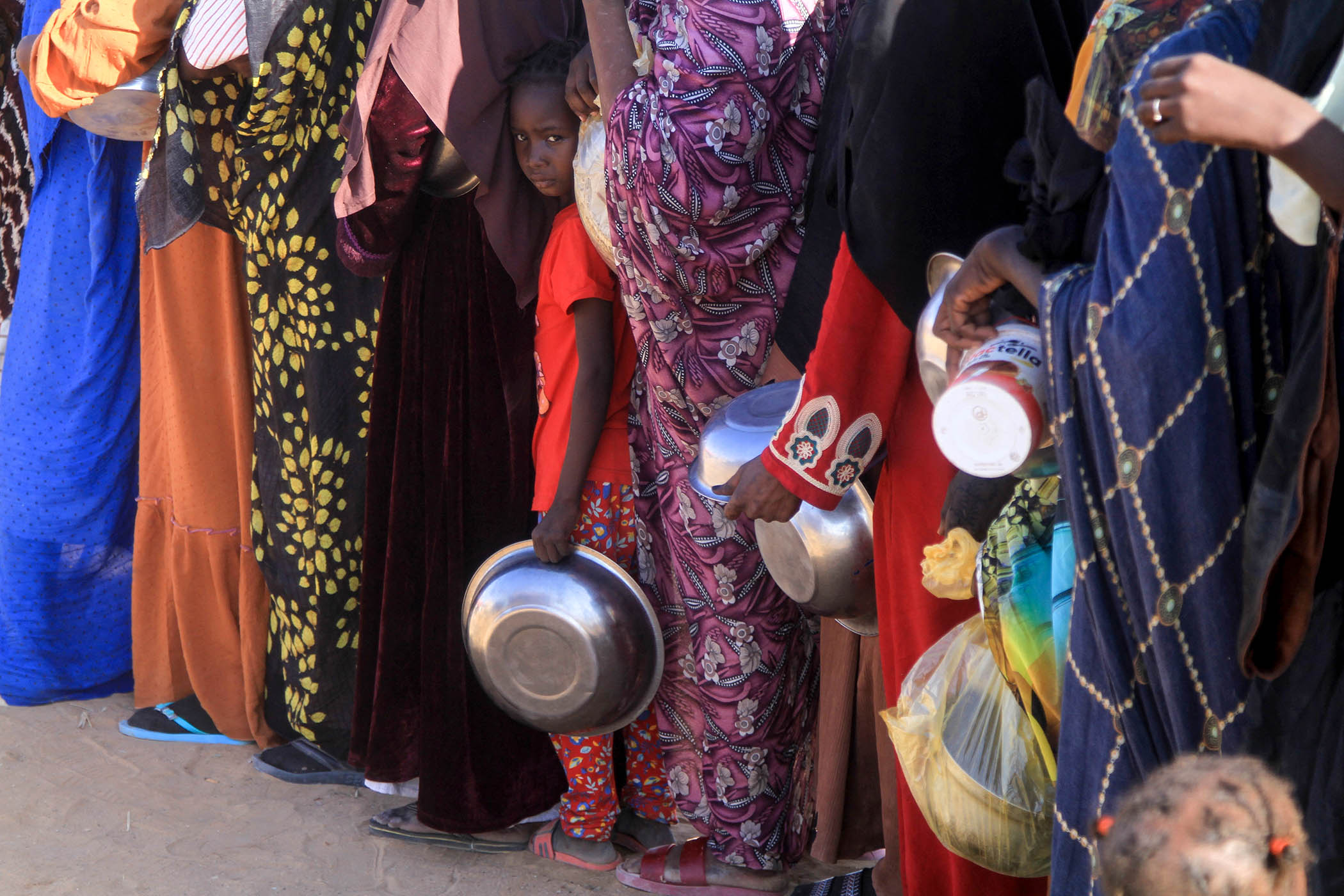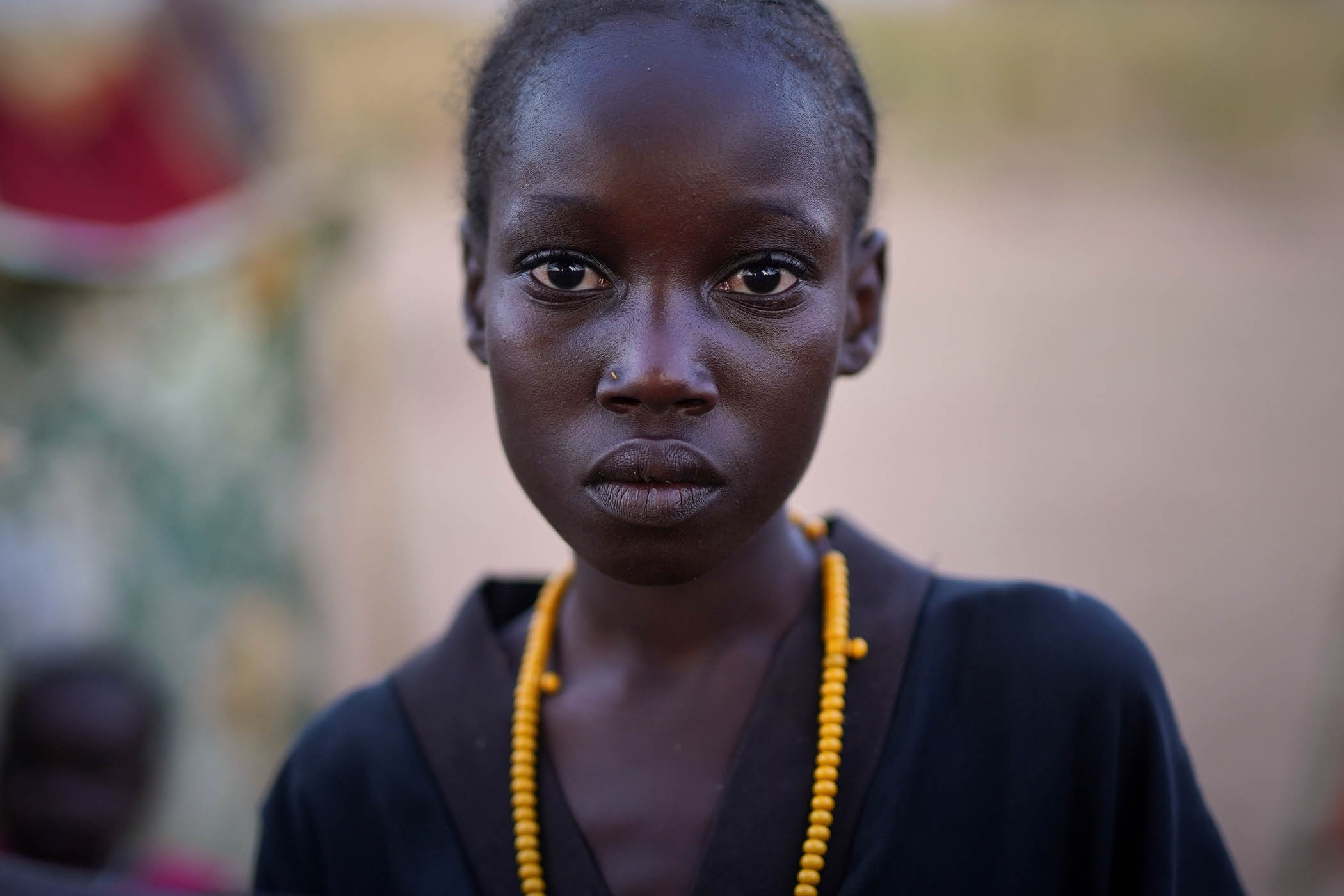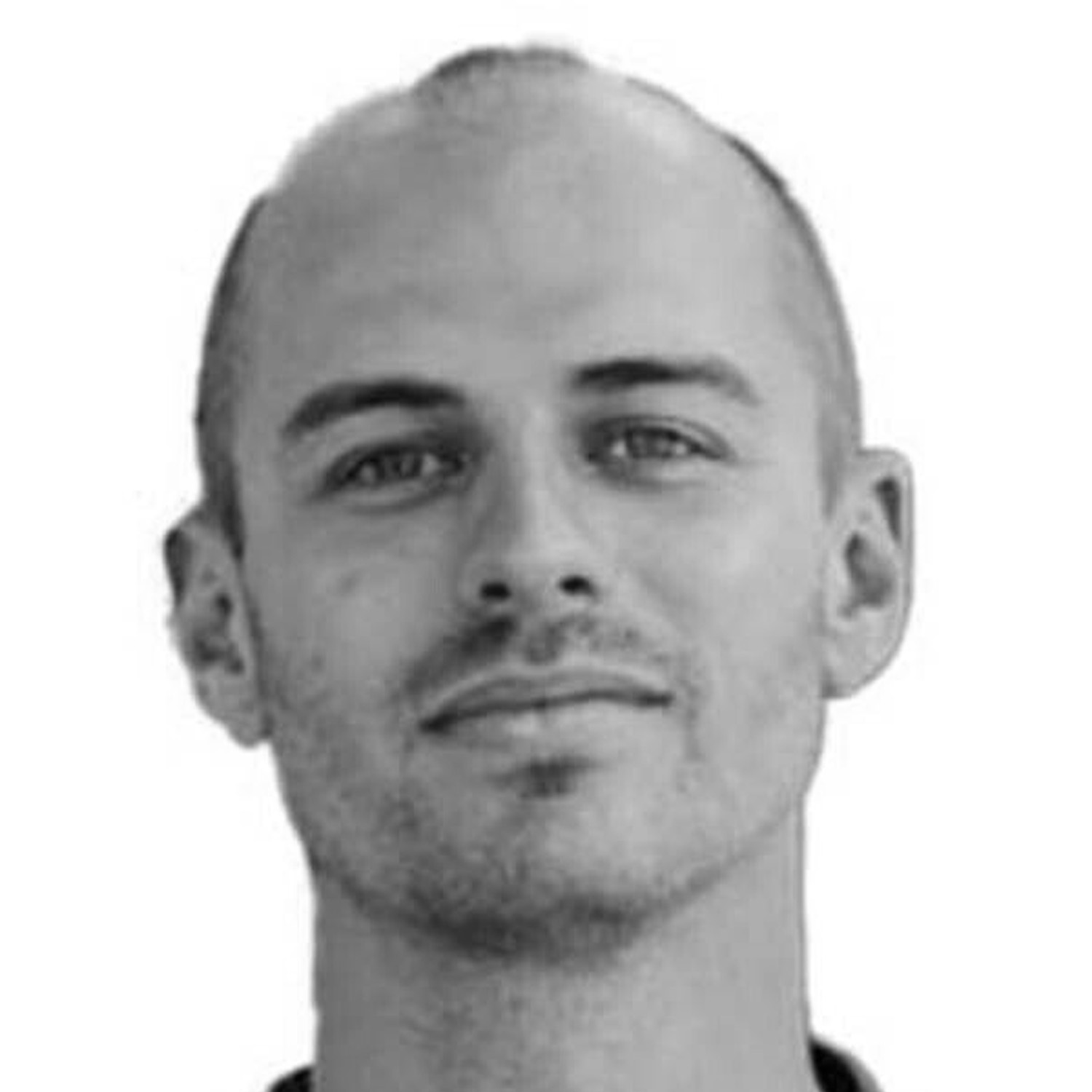Nur calls 26 October “Judgment Day”. It is the day the Rapid Support Forces (RSF) finally broke into and captured El Fasher, the famine-stricken capital of Sudan’s North Darfur region, after a gruelling siege that lasted more than 500 days.
The preceding 24 hours had seen a sharp influx of wounded to the Saudi maternity hospital, the city’s last functioning health facility, where Nur worked. Among the injured were pregnant women whose bellies had been torn open by shrapnel. Medical supplies had run so low that ripped mosquito nets were used as gauze.
“A soldier came and said the RSF were at the gate and approaching us, so we left,” said Nur, which is not her real name. The Observer is protecting her identity as she fears for her family.
She emerged from the ward into a city seized by violence. “There were many bodies everywhere, and looting was taking place in the streets. Some people were riding camels and carrying stolen items like TVs,” said Nur, adding that she saw “people killing women, pointing guns at civilians, executing people, bodies torn apart by explosions”.
Nur is not certain what happened after she left the hospital, forced to abandon severely injured patients, but she heard from colleagues who stayed and hid that the paramilitaries had “executed some people”. According to the World Health Organization, more than 460 patients and their companions were reportedly shot there on 28 October, two days after Nur had left.
Four weeks after its fall, the number of people killed in El Fasher and the surrounding desert is not known. Of the 180,000 people estimated to be in the city when the RSF overran it, about 100,000 remain, according to the International Organization for Migration. Tens of thousands who fled are still unaccounted for.
The city is subject to a communications blackout, and the RSF does not permit international journalists to enter. Unlike the horrors of Gaza, which were broadcast in real-time over the internet, the bloodshed in El Fasher – and the rest of Darfur – has unfolded largely out of sight.
The Sudan Doctors Network estimates that 2,000 people were killed during the takeover of El Fasher. Nathaniel Raymond, director of Yale Humanitarian Research Lab, believes the death toll is far higher. He estimates it could be in the tens of thousands. The Yale team has studied satellite images showing hundreds of objects scattered across the city, consistent with the size and shape of human bodies.

RSF members detain a fighter in El-Fasher after an 18-month siege
“There are so many that we had to make a decision that we can’t manually count them,” he said. Raymond has also pored over images showing patches of disturbed earth and thermal scarring, typically left by fire, taken from across the city since its fall.
The patterns of activity visible from space suggest the RSF is disposing of evidence, according to Raymond, who has identified five “burn pits”, including one near the Saudi hospital. As a result, the true scale of the horrors may never be known.
With the help of a local journalist, The Observer interviewed a dozen survivors of the bloodshed who fled to Tawila, a town controlled by neutral forces about 30 miles to the west. About 7,600 people have made it there. Reporters also reviewed satellite images published by the Yale team, as well as videos, many taken by the fighters, that were verified and geolocated by the Centre for Information Resilience.
The former residents recounted a frenzy of killing, kidnapping and looting as the RSF took control of a city full of terrified and hunger-stricken people. One described seeing “countless bodies of people of all ages” piled so high it made her think of “dead donkeys during a plague”. RSF troops and marauding gangs of armed men patrolled the desert around El Fasher on camels and motorbikes, kidnapping fleeing residents for ransoms of up to 8m Sudanese pounds (about £10,000). Some victims were deliberately run over with vehicles. Others were beaten to death. Men and teenage boys appear to have been singled out before they were shot or taken away, accused by RSF fighters of being soldiers from the Sudanese military. “They executed men after lining them up in rows,” said Naima Adam, one of the witnesses.
On Wednesday, the UN’s top aid official described El Fasher as “basically a crime scene”, citing testimony from survivors. The UN’s human rights chief, Kurt Volker, summarised the atrocities including “mass killings of civilians; ethnically targeted executions; sexual violence including gang rape; widespread arbitrary detentions”.
“These things have not only happened in El Fasher,” a UN official told The Observer. “You see the same pattern in other places where the RSF has fought for a town or city or village. El Fasher is only the latest.”
I. Siege
The RSF had been tightening the noose around El Fasher for months.
It was the last major city controlled by the Sudanese military in Darfur, a vast desert area in western Sudan. Two decades ago, the region was convulsed by a genocide perpetrated by militias called the Janjaweed. The RSF grew out of these groups and joined in a military coup with the Sudanese armed forces to topple President Omar Al-Bashir in 2019. But the two forces turned their guns against each other in 2023 in a battle for control of Sudan.
In January, the US state department said genocide was occurring again in Sudan, citing systematic attacks by the RSF and its allies “on an ethnic basis”. These include the slaughter that broke out when the RSF took over El Geneina, another Darfur city, in November 2023. A leaked UN report said between 10,000-15,000 people were killed.
Analysts and aid workers spent two years warning the violence would eventually spread to El Fasher, where 260,000 were trapped until last month, cut off from aid. Little was done to stop it. Instead, outsiders continued to stoke the conflict. UN investigators and others have said there is credible evidence that the United Arab Emirates is funnelling arms and material to the RSF, often under the guise of aid. The Emiratis deny this and continue to participate in initiatives aimed at ending the war.
After being driven out of the capital, Khartoum, in March, the RSF intensified its attacks on El Fasher. In April, it attacked the nearby Zamzam refugee camp and Abu Shouk, another camp. The next month, they began building a wall of earth – a berm – around El Fasher, choking off supplies.
People became desperate as prices rocketed and markets closed. Many resorted to eating ombaz, an animal feed made from peanut husks. In the hospitals, medical staff drank IV fluids. to keep their sugars up.Residents said they became infested with lice because there was no soap.
‘Living in El Fasher, you considered yourself already dead – no way out and no hope’
Abdulhafiz Ahmed, student
“Every day we woke up searching for something to eat, and we rarely found anything,” said Abdulhafiz Ahmed, an 18-year-old student. “Prices were extremely high, and we had no money at all.”
Khadija Adam, a mother of seven, said: “My son would go out searching for food and bring back ombaz when he could, but even that eventually became unavailable.”
As the famine bit harder, drones buzzed above the city and shells rained down. The RSF launched many attacks, encroaching on El Fasher’s eastern and south-eastern neighbourhoods. As the last functioning medical facility, Saudi maternity hospital dealt with a constant flow of wounded. Civilians moved into its grounds, hoping for meals from the hospital kitchen.
“There was no medicine, no money, no food,” said Nur. “People smuggled in medicine with great difficulty, and even the smugglers were often killed. Sometimes the army’s special operations would attack places where the RSF stored medicine. Many wounds became infected.”
Ahmed, the student, struggled to fall asleep each night, worrying he would wake up to news of a relative’s death. In October, his worst fear came true: his mother, sister and grandmother were killed in a drone strike. “Living in El Fasher, you considered yourself already dead – no way out, no hope,” he sobbed.
Despite the worsening violence, many were too scared to leave. Many had already been displaced to El Fasher by violence in other parts of Darfur. “We kept hearing terrible news about the road,” said construction worker Abdullah Ahmed. “Some people were killed, others went through horrific experiences. We even heard about people carrying goods to El Fasher who were killed.”
But some did flee before the RSF arrived. By the end of October, it was clear to Abdessalam Kittir that the city couldn’t hold out much longer. Armed with more sophisticated weaponry, the RSF was pushing deeper into El Fasher. Columns of smoke darkened the sky as the fighting drew nearer.
For Kittir, the dangers of staying began to outweigh the risks of escape; the RSF had made clear it considered anyone remaining in El Fasher an enemy. On the eve of the takeover, he fled on foot, heading towards the berm under cover of night. “I knew the following dawn we would be subjected to a genocide,” he said.
II. Fall
When it became clear the city would fall, panicked soldiers threw down their weapons and fled, as shells rained down. Many were caught and shot in the street. On the morning of 26 October, dozens of fighters gathered around RSF deputy commander Abdulrahim Hamdan Dagalo in front of the pockmarked facade of the sixth infantry division base, celebrating their victory.
“To the citizens of El Fasher: return to your homes; you are safe,” said Dagalo in the video posted on the RSF’s official Telegram channel. Instead, thousands fled to an opening in the berm to the north-west of the city, as fighters rounded up civilians, accusing them of belonging to the military.
Mother-of-seven Naima Adam saw “many bodies” near the opening in the berm as she headed for Garni, a settlement 10 miles from El Fasher. “They killed people in front of our eyes,” she said. Her own brother narrowly escaped by hiding in trees.
Ahmed, the construction worker, exited the city at the same point. He described a trench “surrounded by a soil barrier” and filled with a “huge number of bodies”.
Footage geolocated by the CIR near the berm opening corroborates witness accounts. One video shows hundreds of men detained by RSF fighters. Five CIR-verified videos show unarmed men being shot.

Displaced women queue for food at a camp in Al-Dabbah, northern Sudan
RSF fighter Elfateh Abdullah Idris Adam, known by the nom de guerre Abu Lulu, appears in several videos taunting and killing unarmed men in civilian clothing. Two of those interviewed by The Observer encountered Abu Lulu as they fled. One of them was part of a group detained by him close to El Fasher’s airport on 26 October. Most of the detainees were soldiers but there were also civilians, including doctors and other medical staff. “They whipped people and looted them,” the person said.
At a military site used by the RSF as a detention centre “we heard screams and gunshots, but we could not see what was happening,” they said. “A doctor who was with us lost her brother. We don’t know whether he died from beatings or something else.” One young man was killed for refusing to open his banking app.
Manahill Mohammed and her three daughters, one of whom had been shot in the pelvis during the siege, were also detained by Abu Lulu’s followers. Her husband had been injured by a drone strike and was left behind in El Fasher.
Mohammed was separated from her daughters and transported to Garni. There, she saw the fighters beat four men to death and run over a fifth with a vehicle as his grief-stricken sister rushed to him. Mohammed was eventually reunited with her daughters and let go after paying a ransom of 6m Sudanese pounds, with the help of her colleague’s brother, who lives in Libya. The RSF acknowledged violations had taken place and detained Abu Lulu in response to an outcry over the videos.
Jongo, who lives in Uganda, got a call two days after the fall of El Fasher. He had been anxiously waiting for news of his father and younger brother since losing contact with them several days earlier. The call was from his brother’s captors. “They said: ‘Your brother, he’s with us, do you want to talk to him?’”
They demanded the equivalent of nearly £4,000 for his release, a huge sum Jongo managed to raise with the help of friends and family. He transferred the money via a banking app and his brother was released, traumatised by his ordeal and swollen with beatings. Negotiations over the release of his father are ongoing. His captors sent Jongo a photograph of the 70-year-old with cardboard wrapped around a gunshot wound to his leg. They are demanding almost £8,000 for his freedom, and Jongo can’t afford it.
III. Flight
The road leading out of the city was lined with dead. “We saw so many bodies that I cannot count them,” said Khadija Adam. Bands of fighters whipped and robbed people as they fled. Young men with shaven heads were singled out as soldiers. Many spent days in the desert with little food or water. One group was forced to eat the raw flesh of a cow killed by shelling.
Karima Abdelhamid also saw people being run over. “There were two girls with their father. They killed the girls and then drove over their bodies. They shot the father, too,” she said. She saw another man identified as a soldier being run over with a vehicle and dragged for a distance. He was left for dead, but survived.
Ahmed, the student, managed to reach Garni where he saw an RSF media team filming as they handed out food and juice. “As soon as the camera was turned off, they began selecting the young men,” Ahmed said. “They took them in large trucks to unknown places.” He had escape by hiding in trees with his two younger brothers. “We covered ourselves with a sheet and put our belongings on top of us, so they wouldn’t see us,” Ahmed said. “When night came, we sneaked into the town and slept in the house of a kind woman.”
More than 100,000 people have now fled El Fasher. More than 70% of children and 60% of the adults screened by MSF in Tawila are malnourished. There are conspicuously few men, aid workers have noted.
Little information is trickling out of El Fasher. The city itself has become a prison; on 4 November a satellite image showed the opening in the berm to the north-west of the city had been sealed off. Relatives who have managed to communicate with people inside the city say they are living in fear. In satellite imagery, the streets that were once busy with horse-drawn carts and taxis appear empty.
Rival regional powers have backed warring parties in Sudan to secure their interests in the resource-rich and strategically located country.
The United Arab Emirates has armed the Rapid Support Forces (RSF) via a network of bases in neighbouring countries and across the wider region, according to analysts and diplomats. That support has been crucial in sustaining the RSF’s fight against the Sudanese Armed Forces, which are backed by the UAE’s regional rivals.

Aid workers distribute food in the El-Afadh camp in Al Dabbah
The UAE denies backing the RSF, but a report by a UN panel of experts in 2024 assessed as credible reports that cargo planes flying from the UAE to Chad were delivering weapons to the RSF. Gold smuggled out of areas under RSF control is sold in the UAE, helping to sustain the group.
The US Treasury sanctioned seven UAE-based companies for enabling the RSF to acquire military equipment and generate finances. RSF leader General Moham m ed Hamdan Dagalo and his family have close personal ties with Emirati leaders.
International journalists are not permitted to enter El Fasher. Phone and internet lines have been cut, and some people seeking to flee the city are being forced back by armed men. This makes reporting on the violence that accompanied its fall exceedingly difficult.
The Observer worked with a local journalist in Tawila, a town 30 miles to the west of El Fasher to which thousands of people have fled, who spent several days talking to survivors of the bloodshed. He sent these recorded interviews by WhatsApp. He did not wish to be identified, fearing for his safety if the RSF makes further gains.
Rapid Support Forces fighters recorded themselves committing atrocities and posted them on social media, possibly using Starlink satellite internet connections. The Centre for Information Resilience, an investigative human rights body, geolocated several of these videos and shared them with The Observer. Some of the footage matches the testimony of the survivors in Tawila.
Reporters also reviewed satellite images compiled and studied by the Yale Humanitarian Research Lab, which has been documenting the situation in El Fasher throughout the Sudanese civil war.
This article was also reported by a journalist in Tawila, whose identity we are protecting because they fear for their safety if the RSF makes further gains.
Photographs by Mohammed Jammal/UNICEF via AP, Rapid Support Forces (RSF)/AFP via Getty Images, Ebrahim Hamid/AFP via Getty Images, AP Photo/Marwan Ali


